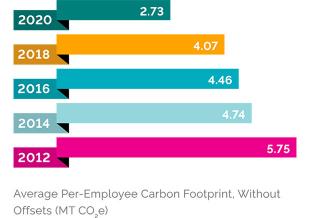
Total electricity consumption is the sum of individual offices’ annual electricity consumption. For offices that are not individually metered, we estimated use by calculating the percentage of the building’s total area we occupy, then using that portion of the whole building’s electricity consumption.










